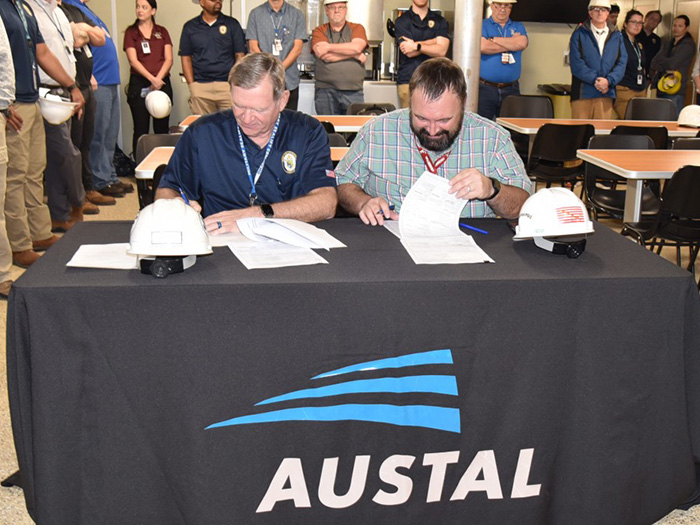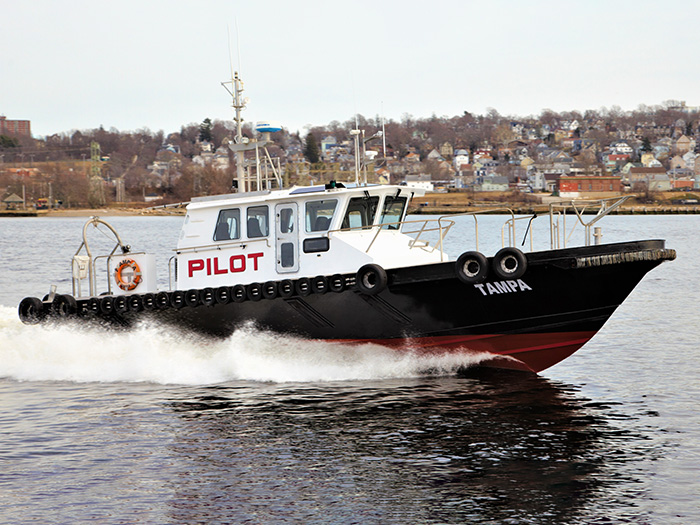Following delivery by Austal USA yesterday, Expeditionary Fast Transport USNS Apalachicola (EPF 13) is now the largest surface ship in the U.S. Navy fleet with autonomous capability.
“The delivery of EPF 13 comes after several successful at-sea periods for the vessel, including Unmanned Logistics Prototype Trials to assess autonomous capabilities integrated into the shipboard configuration,” said Tim Roberts, Strategic and Theater Sealift Program Manager, at the Navy’s Program Executive Office (PEO), Ships. “The Navy and our shipbuilding partner, Austal USA, are proud of the work accomplished and look forward to EPF 13 providing capability and capacity to Military Sealift Command, the fleet, and the U.S. Marine Corps.”
Austal USA says that the vessel went to sea five times over a several-month duration allowing it and its industry partners, L3Harris and General Dynamics Mission Systems, to test and analyze not only typical ship systems but those resulting from autonomous design and construction contract modifications required by the Navy to establish the ship as an autonomous prototype.
EPFs can transport 600 short tons as far as 1,200 nautical miles at an average speed of 35 knots. Each vessel includes a flight deck to support day and night aircraft launch and recovery operations. The ships are capable of interfacing with roll-on/roll-off discharge facilities and on/off-loading vehicles such as a fully combat-loaded Abrams Main Battle Tank.
“Austal USA is proud to deliver this ship to our Navy – it’s innovative and is going to be a critical asset as unmanned capabilities continue to push boundaries and redefine how missions are achieved,” commented Austal USA President Rusty Murdaugh. “Apalachicola will also be the first EPF with the ability to conduct V-22 flight operations, and launch and recover 11 meter Rigid Hull Inflatable Boats (RHIBs). A lot of capability is being delivered to our warfighters with this ship and I’m incredibly proud of our team of shipbuilders.”
With a shallow draft and high-speed, the EPF’s agility provides a positional advantage in the littorals and makes it an ideal candidate to prototype large vessel autonomous operations, including logistics, tendering and adjunct magazine mission profiles.
Fundamental to the autonomy effort was Austal USA’s highly automated in-house designed machinery control system (MCS), which allows the ship to be minimally manned by centralizing machinery operations to the bridge. All Spearhead-class EPFs built to date incorporate the Austal USA MCS design which is secure, scalable, distributive and reconfigurable for multiple propulsion configurations.
Combined with the already highly automated hull, mechanical & electrical systems installed on EPF class ships, Austal USA added automated maintenance, health monitoring, and mission readiness to provide EPF 13 with the capability to conduct up to 30 days of operation without human intervention.
As well as being autonomous-capable, EPF 13 is also the first Expeditionary Fast Transport vessel to be delivered to the Navy with enhanced capabilities to support V-22 Osprey flight operations and launch and recover 11 meter RHIBs. These upgrades along with the EPF’s speed, maneuverability and shallow water access are key enablers for support of future Expeditionary Advanced Base Operations around the world.








